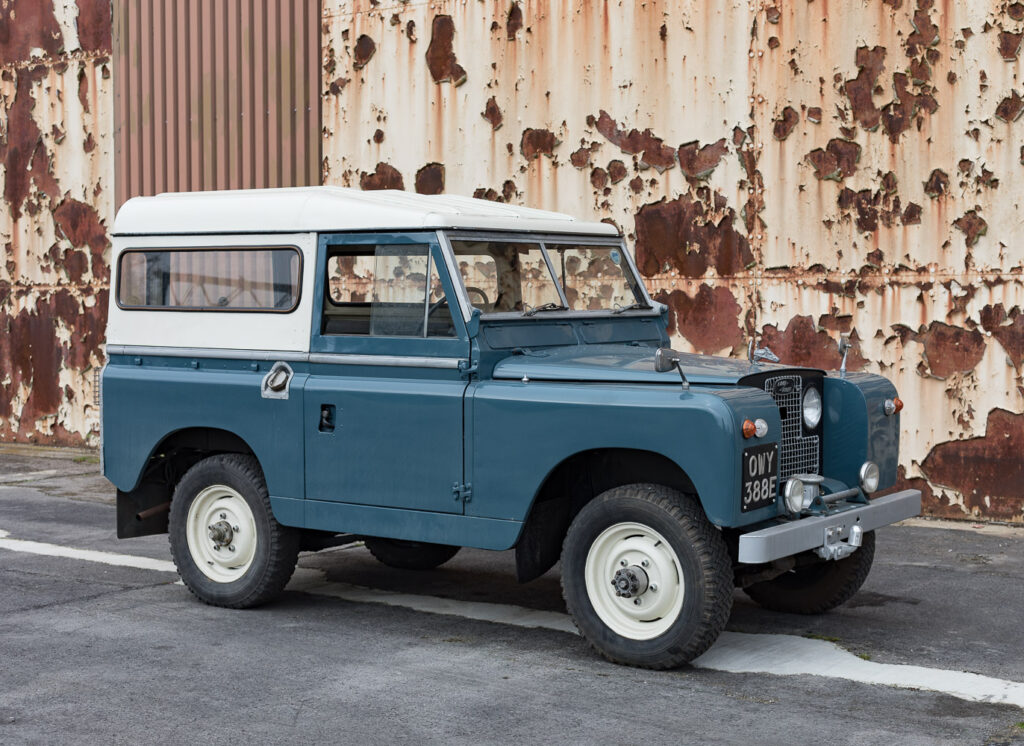
Probably influenced by the design of the Jeep, the “Landy” was designed in 1947 by Maurice Wilkes with his brother Spencer who was MD of Rover at the time. The first model, simply known as the “Land Rover” was launched in 1948 at the Amsterdam motor show.
Various models have been made over the near 70 years of production, but the big change was the replacement of the Series III in 1983 with the model that came to be known as the Defender. This particular model is a Series IIa built at the Solihull plant in 1967.
Electric conversion options
Just like the vehicles themselves, there is a nearly infinite number of ways to make an interesting conversion, but since Series Land Rovers are scary if driven fast and are too uncomfortable to drive long distances in, we offer two core options. And yes I hear you say, “we know all this and we still love them”. We agree.
Low Voltage with manual gearbox
Hyper9 electric motor bolted directly onto the original gearbox and driving the rear wheels using a clutch and all the gears: you still have all the ratios available but now you really don’t ever bother to use first. You can get 36kWh of batteries under the bonnet, and you can fit a range extension pack in the chassis if you want more. You can expect about 2.5 miles/kWh on-road and up to twice this offroad.
Note the charge system that comes with this option makes it hard to waterproof if you are fording rivers much deeper than the driver’s footwell.
This option can be delivered as a kit.
High voltage with fixed reduction drive
TorqX-310 350V electric motor with a 2:1 fixed in-line reduction gear plugged directly into the transfer box. This gives you better than original 1st gear torque all the way up to top speed (85mph if you’re brave), and you also retain the original high/low selector.
This option can deal with rivers as deep as your nerve will last. We recommend a 42kWh battery pack as being ample and the package comes with CCS rapid charging.
What this customer wanted
This Series IIa came to us with a capstan winch on the front – so naturally we wanted to keep it in full working order. This meant a Hyper9D motor, and hence the low-voltage system.
It has 36kWh of batteries and 15kW of on-board charge capacity, giving a 2.4 hour recharge time. It also has electric “engine braking” for controlled descent of muddy hills.
| Petrol Engine | Electric Motor | |
| Power: | 50kW @ 4,500rpm | 90kW @ 4,000rpm |
| Torque: | 152Nm @ 2,500rpm | 235Nm @ 0rpm |
| 0-60: | 36 seconds | 20 seconds |
| Top Speed: | 70mph | 90mph |
| Fuel: | Petrol | Electricity |
| Cost Per Mile: | 30p | 5.2p |
| CO2 Per Mile: | 0.5kg | 0kg |







